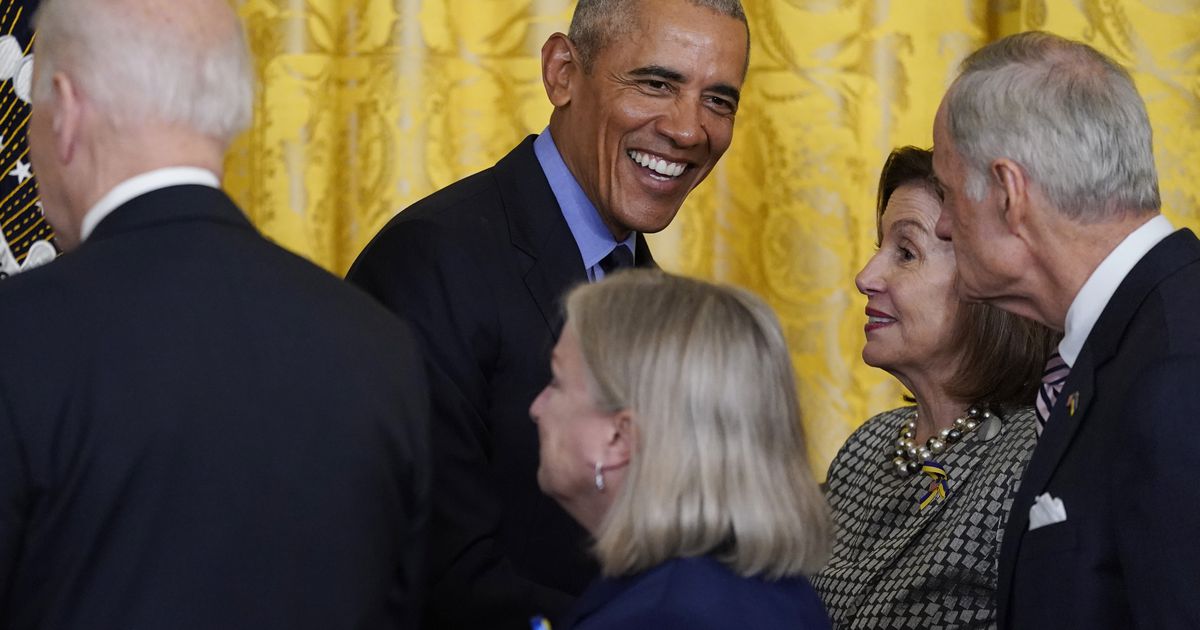At age 12, Obamacare has proven itself – The Dallas Morning News

Former President Barack Obama’s joyous return to the White House marked an occasion many never expected to see: the 12th anniversary of his signature presidential achievement, the Affordable Care Act.
After all, public sentiment was mixed at best when the ground-breaking law guaranteeing Americans health insurance coverage passed in 2010 without a single Republican vote. Then, the GOP spent years trying to “repeal and replace” it, climaxing with its failure during Donald Trump’s presidency to do neither.
Now, the measure that foes derided but advocates now acclaim as Obamacare is thriving. It provides more than 14 million Americans with their health care coverage, and 38 states have used the provision to expand Medicaid to cover another 15 million lower-income families. The portion of the public that supports the system has risen into the upper 50s.
“It’s done what it was supposed to do,” the former president said at an April 5 White House event. “It’s made a difference.”
Indeed, Obamacare coverage has been expanded by President Joe Biden, who correctly called the measure a “big [expletive] deal” on the day the former president signed it. Unfortunately, the law’s travails are not yet over.
The provision in last year’s American Rescue Plan increasing by 2.7 million the number of Americans receiving federal Obamacare subsidies will expire at the end of 2022. An extension through 2025 was in Biden’s Build Back Better Act the Senate rejected early this year after narrowly clearing the House last year.
That means that, unless Congress revives the BBB measure or includes an extension in another must-pass bill, the Centers for Medicare and Medicaid Services estimates, 3 million Americans will lose their insurance and 10 million others would face higher costs.
That could be another political problem for the beleaguered Democratic congressional majority — plus a blow to millions of Americans. It must not be allowed to happen.
Despite the partisan divisions that marked its birth, the law’s initial impact was enormous. The Centers for Disease Control estimates the proportion of Americans without health insurance dropped from 16% in 2010 to just under 9% six years later. That’s about where the Census said it stood in 2020.
In another measure of its success, the proportion of uninsured Americans in the 38 states that took advantage of ACA’s provision underwriting most state Medicaid expansion costs is about half that in the 12 states that didn’t.
Two of the latter are Texas and Florida, where more than one million people are ineligible for either Obamacare subsidies or Medicaid coverage.
Besides expanding health care coverage, the ACA outlawed lifetime limits on insurance payouts that had prevented some with chronic diseases from buying needed coverage.
In a graphic example of the ideological divide between the two parties, the Obama and Biden administrations repeatedly sought to expand coverage by subsidizing its costs.
By contrast, after failing to kill the ACA, the Trump administration sought to weaken it. The administration limited enforcement of the now repealed requirement that everyone be covered and reduced funds and time for enrollment and advertising.
Republican opposition to expanded health care protection is nothing new. Most House Republicans voted to kill key provisions in the initial Social Security Act before supporting final passage in 1935. A majority of the House GOP voted to make Medicare voluntary before dividing equally on final passage in 1965.
Since taking office 15 months ago, the Biden administration has taken several steps to increase participation and, as a result, reduce the number of uninsured Americans. Besides increasing subsidies, it expanded outreach, extended the signup time and reversed several Trump rules that complicated the signup process.
As a result, Obamacare enrollment this year reached 14.2 million, up 20% in a year. Last week, the White House announced a plan closing one of the law’s remaining gaps by allowing relatives of people with private insurance through their employer to qualify for Obamacare subsidies.
Still, some gains would be reversed if Congress fails to extend the subsidies that help millions buy coverage.
Meanwhile, despite the growing participation and declining uninsured rates, most conservative criticism has continued — with some validity.
A Heritage Foundation report two years ago noted the law has not only failed to cut health care costs, but they have increased. Citing Department of Health and Human Services statistics, the report said, “premiums have doubled for individual health insurance plans since 2013, the year before many of Obamacare’s regulations and mandates took effect.”
That, of course, is one reason why Biden increased premium subsidies and the number of people who qualify for them.
The principal GOP target was Obama’s original campaign promise that, under his plan, “If you like your health care, you can keep it.”
The independent fact-checking web site PolitiFact said initially it was likely Obama’s claim would prove “too sweeping.” After he revised his claim to say he meant “you can keep it if it hasn’t changed since the law passed,” PolitiFact rejected that claim, labeling it “pants on fire” which is its way of calling something false.
“It secured the principle of universal health care,” Obama said at the White House. In reality, however, that principle has not yet been fully achieved, since nearly 28 million Americans still lack health insurance: one-fourths of them children.
Nevertheless, the ACA has been a godsend for millions of families who couldn’t afford insurance beforehand or were barred from buying it.
Carl P. Leubsdorf is the former Washington bureau chief of The Dallas Morning News and a frequent contributor. Email: carl.p.leubsdorf@gmail.com
Find the full opinion section here. Got an opinion about this issue? Send a letter to the editor and you just might get published.







